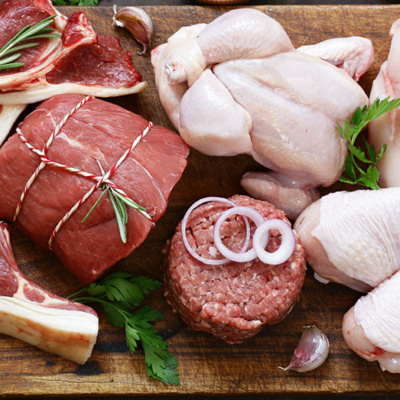top of mind news
- Restaurant’s Closing Indoor and Outdoor Dining
- Gift Card Giving to Drive Restaurants’ 2020 Holiday Season
- ‘Free-fall’: 10,000 restaurants have closed over the past three months, according to the National Restaurant Association
- Restaurants’ New Brand Challenge: Delivering a Consistent Customer Experience in an Inconsistent World
- Keys to Running a Successful Ghost Kitchen
Poultry
 Chicken slaughter for the week ending December 5th, at 167 million head, while the largest since early November, was down 3% from a year ago. Front-end intentions continue to imply a continuation of smaller broiler harvests well into Q1 of 2021. While the ArrowStream composite chicken cutout index had been on the rise, modest losses were noted last week as breast meat declines outstripped the continued firmness across the wings, plus only light upside gains for leg quarters. Take note, that while leg quarter prices are back to their highest levels since the early summer, pricing remains near 25% back of year ago levels and is weighing heavy on producer intentions to increase slaughter rates. Still, further price gains for the leg quarter markets is anticipated.
Chicken slaughter for the week ending December 5th, at 167 million head, while the largest since early November, was down 3% from a year ago. Front-end intentions continue to imply a continuation of smaller broiler harvests well into Q1 of 2021. While the ArrowStream composite chicken cutout index had been on the rise, modest losses were noted last week as breast meat declines outstripped the continued firmness across the wings, plus only light upside gains for leg quarters. Take note, that while leg quarter prices are back to their highest levels since the early summer, pricing remains near 25% back of year ago levels and is weighing heavy on producer intentions to increase slaughter rates. Still, further price gains for the leg quarter markets is anticipated.
Beef
Production last week picked up following the holiday week, but the 667k head harvested were 2.2% back of a year ago. There remains just two full beef production weeks left in 2020, and packers are likely to remain aggressive ahead of two consecutive weeks of holiday reduced kills. The USDA boxed beef cutouts were mixed last week, with the Choice fading while Select headed up. Still, the Choice ribs continued to find significant strength, but downside has overtaken the remainder of the carcass. The beef 50s prices continue to chop sideways near $0.40, but modest upside potential is expected heading into early 2021.
Pork
While the previous week’s record pork output was tempered, last week’s production posted a new all-time high at 607.1 million pounds – up 1.9% from a year ago. Pork production may be active again this week, but lighter holiday schedules should underpin wholesale pork prices moving forward. Monthly U.S. pork exports remain active, with October data confirming a record setting pace for the seventh time in the last 12 months. Belly prices remain in the lower $0.90s, but history suggests that the downside risk may be limited in the near-term.
THE SEA
Seafood
The shrimp markets continue to mostly track below year ago levels. U.S. shrimp imports have remained solid. During November, the U.S. imported 5.5% more shrimp than the previous year. Fairly strong shrimp imports are anticipated to continue this winter. This factor and erratic foodservice demand could temper any upside potential in the shrimp markets for the next several months.
THE GARDEN
Produce
The tomato markets have remained relatively firm during the last week due to short supplies. The domestic harvest out of Florida has been tracking above year ago levels but cooler temperatures last week slowed production. Further, history suggests that the tomato markets could move higher in the near term. The five-year average move for the large mature green tomato market from this week through the end of the month is an increase of 5%. The Idaho potato markets are fairly steady, but prices are expected to move higher as 2021 progresses.
THE KITCHEN SINK
Dairy
CME cheese block and barrel prices last week stabilized after falling sharply in recent weeks. The domestic cheese markets are now lower than the global markets which will boost export sales. This factor and the likelihood of some added government dairy purchasing hints the downside risk for cheese prices may be small. CME spot butter prices last week were the highest since September but still historically low for December. Like cheese, U.S. butter prices are cheap versus the global butter markets which is encouraging exports. The downside risk for the butter market is likely limited as perceived value exists.
Grains
The wheat markets have jumped during the last week despite the USDA projecting an historically large wheat supply in their monthly update. Food inflation in Russia is causing the county to revisit wheat and other food exports. Russia is the world’s largest wheat exporter. This could underpin wheat prices in the near term.
Oil
Nearby WTI crude oil futures last week experienced the highest weekly close since February. A recently weakening U.S. dollar is encouraging petroleum product exports and providing support to crude oil price which may persist this month.












